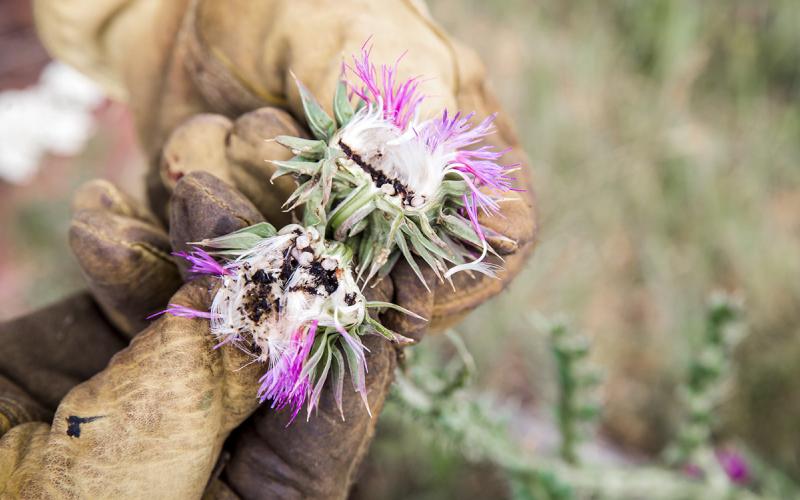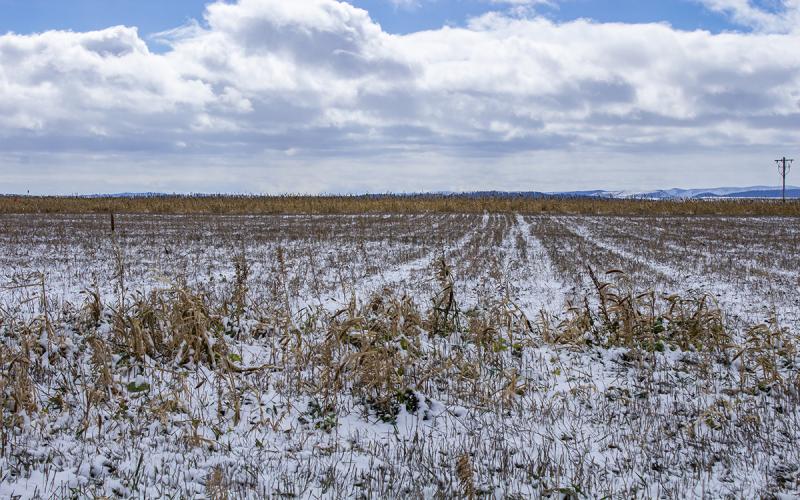Written collaboratively by Eric Jones, Philip Rozeboom, Jill Alms, and David Vos.
Kochia is a widespread weed in South Dakota and the Northern Great Plains states. Kochia germinates early in the growing season and often needs to be managed before crop planting. In no-till farming, herbicides are relied on to manage kochia before planting. Saflufenacil (Sharpen) is an herbicide that can be applied at a burndown timing before most crops in South Dakota and is very effective on kochia. However, overreliance on saflufenacil has selected for resistant kochia in North Dakota and Saskatchewan (Geddes et al. 2025) (Figure 1). Therefore, herbicide screens were conducted at South Dakota State University to determine if resistant populations of kochia existed in South Dakota.
Regional Herbicide Screens
North Dakota
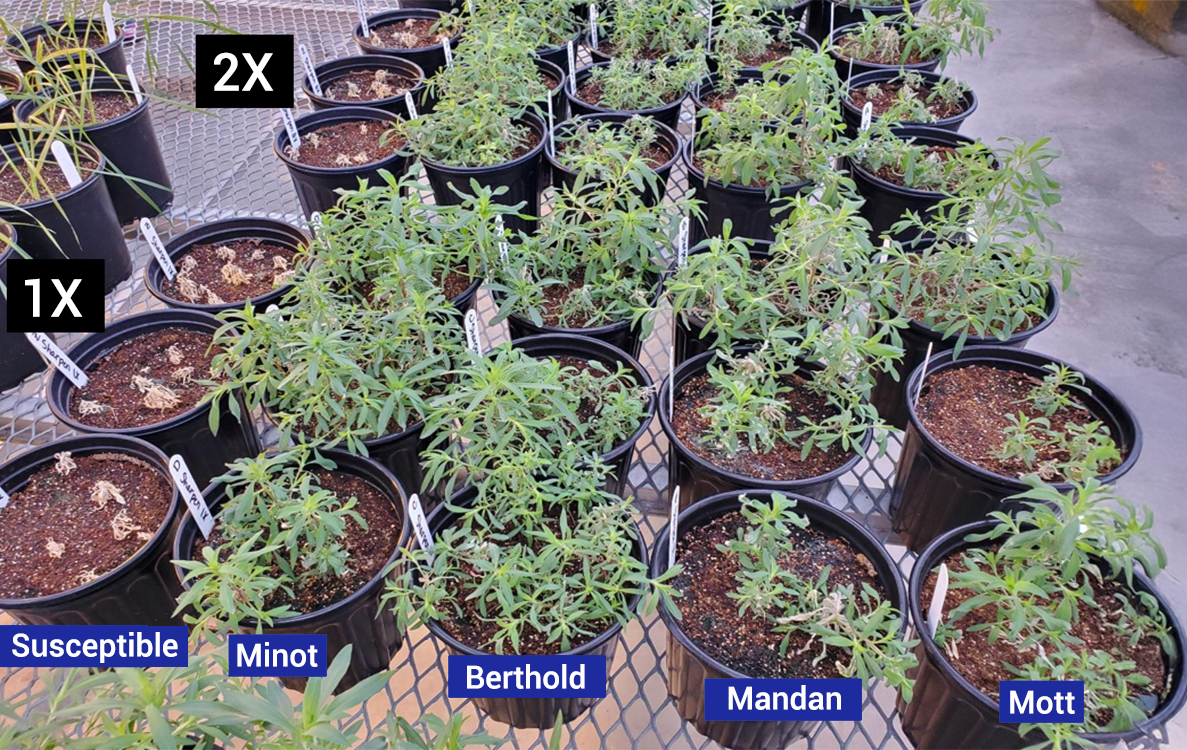
South Dakota
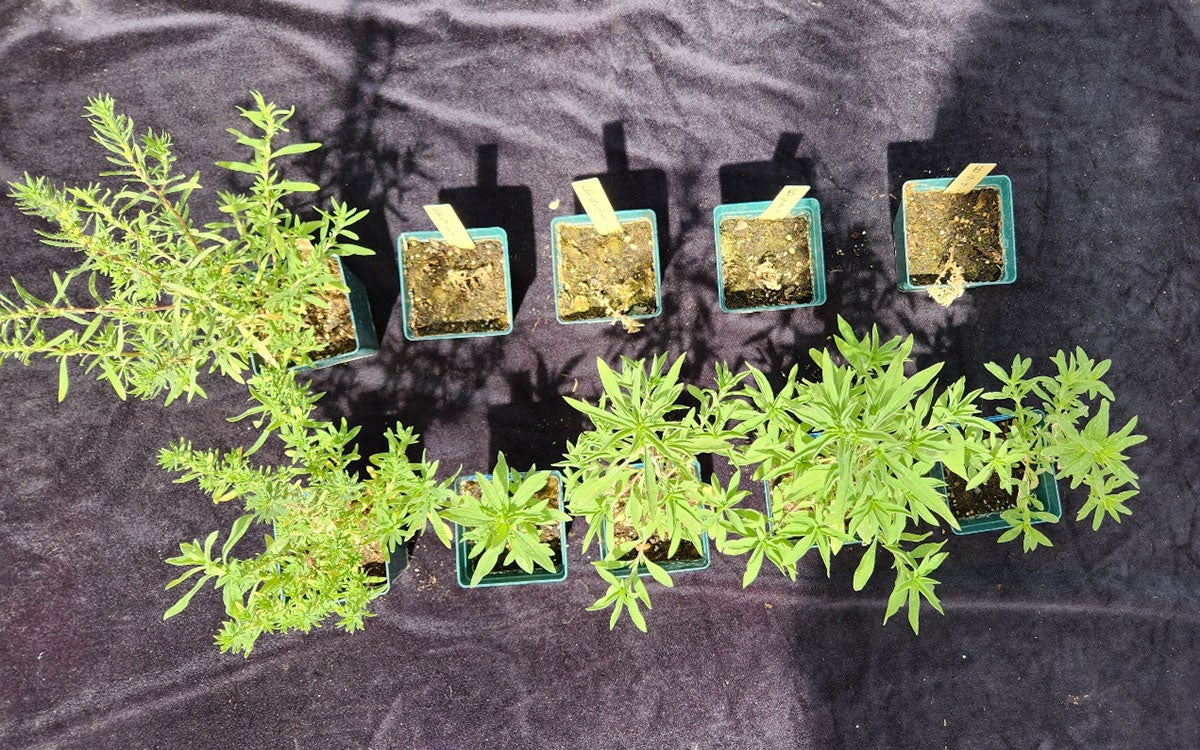
A kochia population from Northeast South Dakota was found to survive the 1X rate of saflufenacil (1 fl. oz. per acre) in the greenhouse (Figure 2). Twenty kochia plants from the Northeast South Dakota population and a susceptible population from Southeast South Dakota collected were treated with saflufenacil applied at 1 fl. oz. per acre. No plants from the Northeast South Dakota population died after treatment, while only four plants from the susceptible population survived (Figure 3). This level of survival in the screen is comparable with the survival levels of saflufenacil-resistant kochia treated with similar rates (Geddes et al. 2025). The results of the saflufenacil screen are that the population from Northeast South Dakota is resistant to saflufenacil. Current efforts are screening more kochia plants collected from across South Dakota to determine the distribution of saflufenacil resistance (Figure 4).
Survival Rates
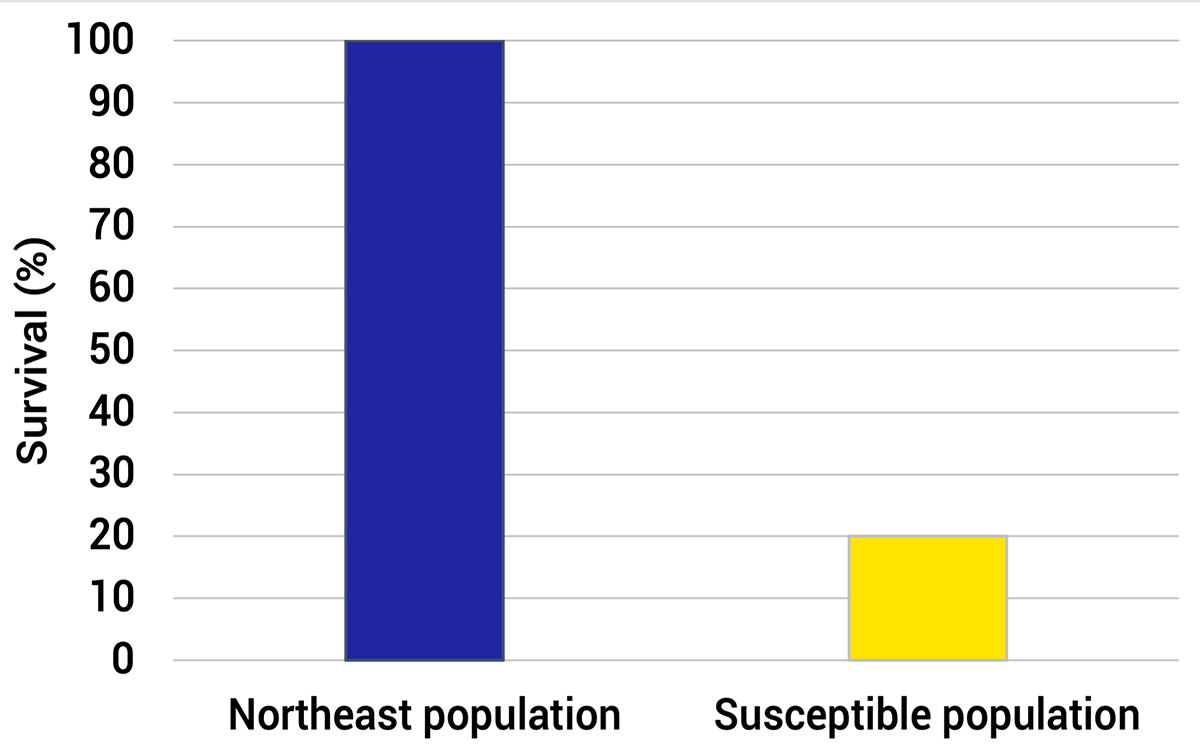
South Dakota Regional Samples
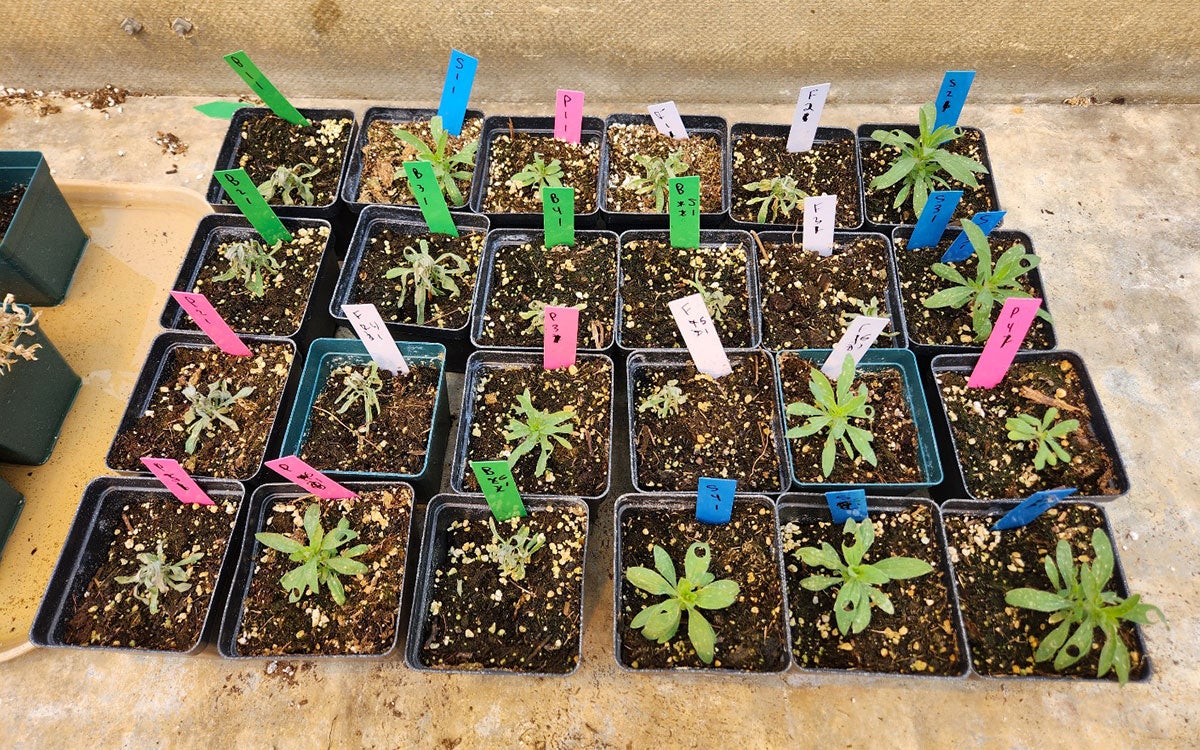
Implications
While saflufenacil can be effective on kochia and other weeds, efforts should be made to reduce selection pressure on resistant weeds. Other herbicides should be mixed with saflufenacil to reduce selection pressure on resistant weeds while still providing effective management. Paraquat (Gramoxone, others) is an effective burndown herbicide with flexibility to subsequently plant crops after spraying. Dicamba (Banvel, Clarity, others) can be effective on kochia, but more restrictions are presented for plant back restrictions based on the crop to be planted. Refer to the most-recent South Dakota Pest Management Guides and specific herbicide labels for use and restrictions.
If herbicide failures occur, first manage the surviving weeds, then report the failure to SDSU Extension. Control failures can be retreated with a different and effective herbicide. However, mowing, tillage (if feasible), and hand weeding can be effective tactics to manage surviving weeds to ensure seeds are not produced. If a control failure is realized at the burndown timing, extensive and intensive efforts should be implemented during the growing season to manage kochia plants to ensure seed production is ceased. Cultural, chemical, and mechanical management tactics should be utilized.
References
- Geddes CM, Law QD, Jenks BM, Howatt KA, Ikley JT, Jaster A, Pittman MM, Biggers K, Meiners I, Porri A (2025). Protoporphyrinogen oxidase (PPO)-inhibitor resistance in kochia (Bassia scoparia). Weed Sci. 73(e26), 1–12. doi: 10.1017/wsc.2025.4
